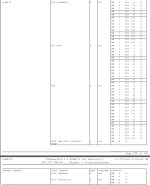AutomationTechBrian
Lifetime Supporting Member
I really struggle with STL in Siemens Step 7 Classic. I'll learn chunks, but then I don't use it enough to retain and build on the knowledge. When troubleshooting, I can usually limp through an issue with my basic knowledge, but today it's different. There is an output that is pulsing on and off, and that pulsing is beating up the components of the machine. The plant manager wants me to eliminate the pulsing. I suspect there is a timer involved, but this STL network is long, and it's taking me far to long to pick it apart. I would need a remedial class just for this one problem. I tried changing the program to LAD by View -> LAD, or CTL + 1, but nothing changes... The menu says LAD, but the program displays the same STL as it does when the menu says STL.
So I've gotten creative in capturing the issue to share in hopes that someone can give me some insight to where to look to manipulate or eliminate the pulse. If you're really bored, this might be fun. And maybe I, and a few others, might learn something valuable from this.
Here is the video of the pulsing coil. Notice the role of M37.4: https://youtu.be/aqqQWAlCoWM
I've attached a PDF of that long network that writes to M37.4. It's so long that a screen capture wouldn't work... It's 4 pages, with very little documentation. I'm curious to see where this goes.
So I've gotten creative in capturing the issue to share in hopes that someone can give me some insight to where to look to manipulate or eliminate the pulse. If you're really bored, this might be fun. And maybe I, and a few others, might learn something valuable from this.
Here is the video of the pulsing coil. Notice the role of M37.4: https://youtu.be/aqqQWAlCoWM
I've attached a PDF of that long network that writes to M37.4. It's so long that a screen capture wouldn't work... It's 4 pages, with very little documentation. I'm curious to see where this goes.




